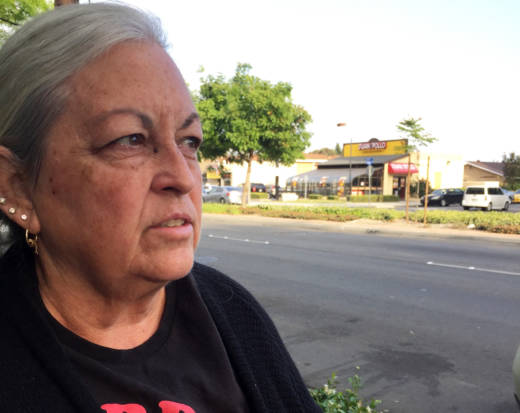Finances were tight back then, and Weinstein said she made a big mistake falling so far behind on rent. She and her mom came home one day to their apartment in Anaheim and found a padlocked front door.
“It was horrifying," she says now, sitting in the dining room of Bridges. "Three months we didn’t pay the rent, and they locked us out one day when we went out to do errands. Basically, we lost everything. All our belongings, from clothes to furniture, everything."
"I was embarrassed to tell my family," Weinstein says, and starts to cry. "So we didn’t even tell them for a few months while we were on the street, I was so embarrassed. To even say anything to anybody.”
Weinstein and her mom don’t seem like typical homeless people. Weinstein looks like she’s on her way to a PTA meeting.
But the truth is, she may actually be typical, according to Larry Haynes, executive director of the Santa Ana-based Mercy House, which runs Bridges.
“The majority of homeless people in Orange County, and actually throughout California, are not chronically homeless," Haynes says. "They are people who have not been homeless for more than a year."
He says the ones who are so clearly visible on the street -- the chronically homeless, many with substance abuse or mental health problems -- make up only about a third of the homeless population.
Most are like Weinstein, he says, homeless for the first time. At the new Bridges shelter, the emphasis is not just on providing a place to sleep, but trying to reverse homelessness, he says.
“Literally, our staff wear T-shirts [that say], 'Tell me your housing plan.' From day one, this isn’t about rest. It’s not even about getting out of the elements, although all that is true. But the first conversation is, what is your exit plan.”
Weinstein just hopes to find a place to live she can afford. Orange County has one of the most expensive markets in the nation, with housing prices and rentals going for well over double the national median.
And she doesn’t earn enough, even working full time, to pay for that -- so she’s coming to grips with the idea of getting a second job. Or maybe learning some new work skills, at age 59.
"I’m trying to make this better, and get us back in a house," Weinstein says.
Bridges opened in May and is already at full capacity, handling 100 people at a time, but will expand to serve twice as many people by next year.

